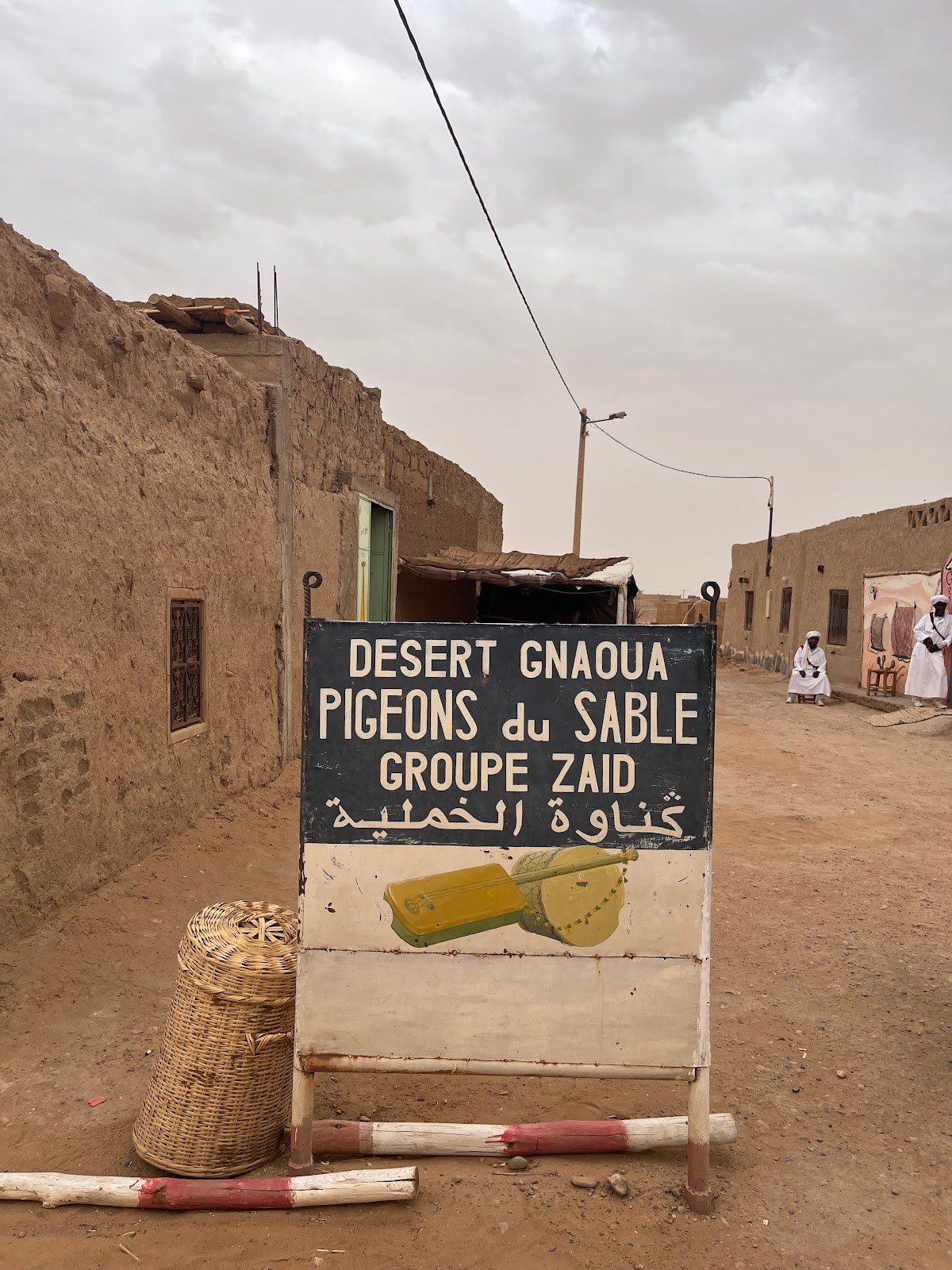Gnaoua Music and Status
Among the most fun stops on the trip was when we had to the chance to see Gnaoua music performed. For this experience, we were brought into the performance area, served tea, then got to hear the music. The musicians were dressed in traditional attire and performed with an array of unique instruments and rhythmic clapping. The power of their voices and the beat of the tune was mesmerizing for us as listeners. In the end, many of us were even inspired to join the dance ourselves, gathering around in a circle and taking part of the joy.
I wanted to know more about the history of gnaoua and the people that inspire such music. I found the history of gnaoua (or 'gnawa') to be a look into the changing history of formerly enslaved individuals brought to North Africa. During the slave trade, many Sub-Saharan peoples were brought to North Africa, bringing with them their practices and customs. From the 16th century, gnaoua music was one such practice brought to Morocco that is now deemed a marker of Moroccan intangible cultural heritage by UNESCO (UNESCO, 2015). Gnaoua practices arose from "freed slaves in Morocco blending older religious beliefs—likely with Muslim overtones—from the sub-Saharan Africa with predominantly Islamic Morocco," manifesting in gnaoua music becoming an integral part of Morocco's music culture ( Robertson & Richerova, 2020, p.1) Gnaoua music is characterized by its spiritual and healing meanings. The healing aspect of the practice is seen at both the collective and individual levels, exploring "acceptance of generational and cultural trauma of enslavement" as well as "the love and healing given to an individual" (Robertson & Richerova, 2020, p. 2-3). As the message of the music has evolved with the status of its people, the practice has remained a constant in the culture of its practitioners.
It was wonderful to see what joy the music brings to all listeners. In learning of its initial beginnings among the enslaved people forcibly brought to Morocco, it is important to note gnaoua's status now as a cultural music and marker of the nation, a reflection in the changed status of its makers. Seeing the excitement around the yearly gnaoua music festival reveals a nation that, rather than diminish a product of its more lurid past, has come to celebrate and bring international attention to the music of its accepted people.
References
Robertson, A., & Richerova, P. (2020). The Embodiment of Power: Observations on Healing Through Gnawa Trance The Gnawa of Morocco.
UNESCO - Gnawa. Intangible Cultural Heritage. (2015). https://ich.unesco.org/en/RL/gnawa-01170.



This was probably one of my favorite experiences while in Morocco. I truly felt immersed in their culture while watching this performance.I find it interesting that you note their beliefs of the healing properties of music because it reminded me of that one area in Fes that we stopped that used to be an insane asylum. The tour guide said their form of treatment was music that was played in the center for all the patients to hear. This post gave me a lot of insight about the origin of the Gnaoua music that I was completely unaware of!
ReplyDeleteI really enjoyed being able to experience this music and the history of this culture was interesting to me. You could really feel the energy in the room, and you could tell that the people performing truly enjoyed being able to share a part of their culture. Music is such an important aspect of culture, and I believe it is crucial to pass down from generation to generation. Seeing this in Morocco made me think of the Geechee Gullah shouters in McIntosh County where I am from, which has a similar history in respect to the generational pass-down of the music, and how both are now a protected marker of their respective cultures.
ReplyDelete